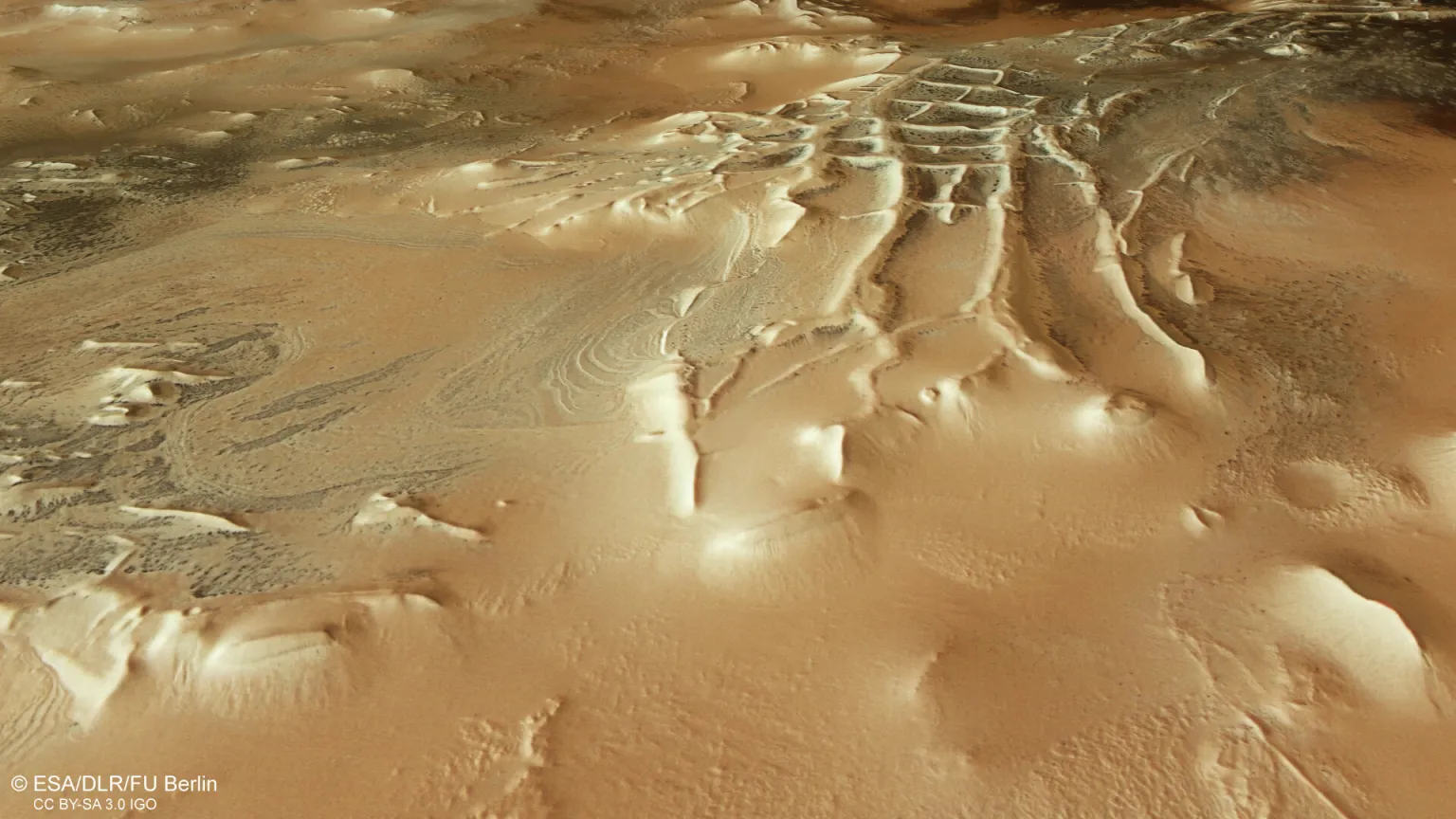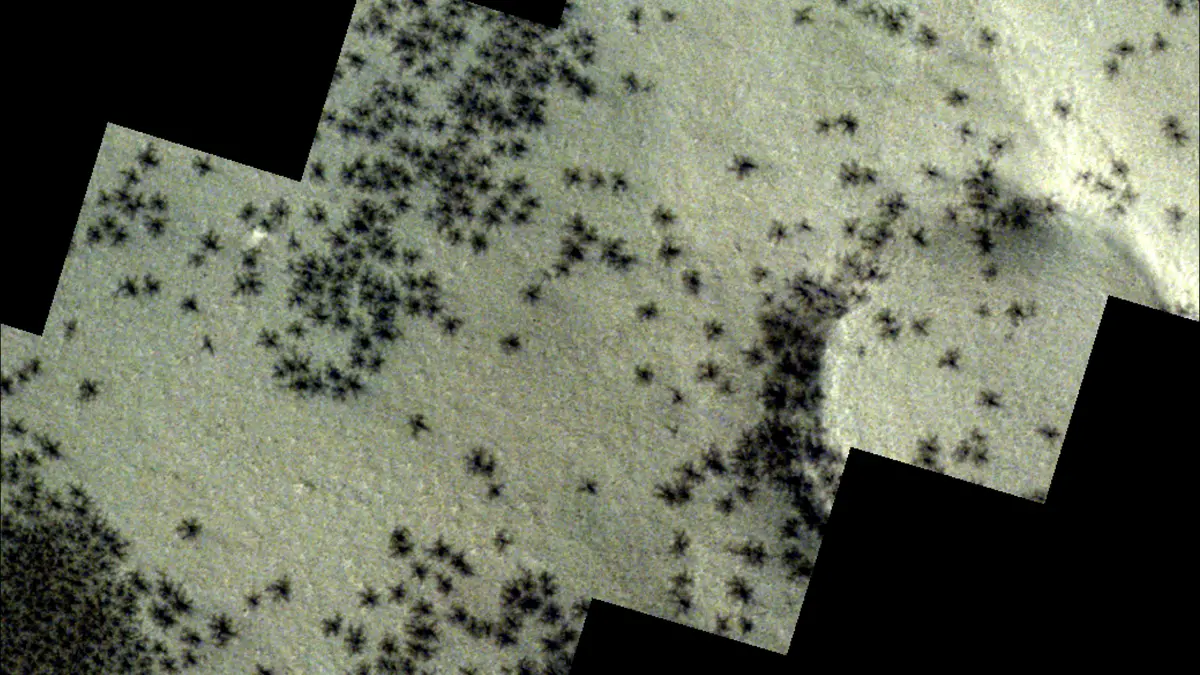Revealing the Enigmatic Martian Spiders
New observations reveal seasonal spider-like formations emerging from crevices on Mars’ terrain. Recent images, captured by the Mars Express orbiter operated by the European Space Agency, depict small, shadowy structures reminiscent of spiders traversing the area known as Inca City.
Spring has sprung on Mars, and with it comes the fascinating phenomenon of “Martian spiders”! These aren’t creepy crawlies from another world, but rather intriguing geological features spotted in Inca City.
Located near the Red Planet’s south pole, Inca City is characterized by a network of ridges and valleys that vaguely resemble ancient ruins. But the real mystery unfolds with the arrival of warmer temperatures.
Like Earth, Mars experiences four distinct seasons, albeit with longer cycles. These enigmatic black formations, resembling spiders, emerge during the approach of Martian spring following a harsh winter. The satellite image portrays a gathering of dark spots with faint leg-like appendages. While appearing diminutive in the image, they may actually be of considerable size.

Image by ESA/TGO/CaSSIS
ESA’s Insight: Unraveling the Mysteries of Mars
According to the European Space Agency (ESA), these formations proliferate across the surface “when spring sunlight interacts with layers of carbon dioxide accumulated over the dark winter months.” As temperatures rise, sunlight penetrates the layers of carbon dioxide ice, causing the ice beneath to transform into gas, rupturing the overlying slabs.
This process creates pockets of pressurized gas under the ice, eventually bursting through and carving dark, finger-like channels across the surface. Hence, these channels are dubbed “Martian spiders” due to their resemblance to arachnids.
Understanding Martian Landscape Dynamics
These observations not only provide a glimpse into the seasonal changes on Mars but also offer valuable clues about the planet’s geological history and the presence of frozen carbon dioxide reservoirs.
So, while there may not be actual Martian spiders lurking in Inca City, these seasonal features offer a fascinating window into the dynamic and ever-changing Martian landscape.
Nidhi is a gold medalist Post Graduate in Atmospheric and Oceanic Sciences.







